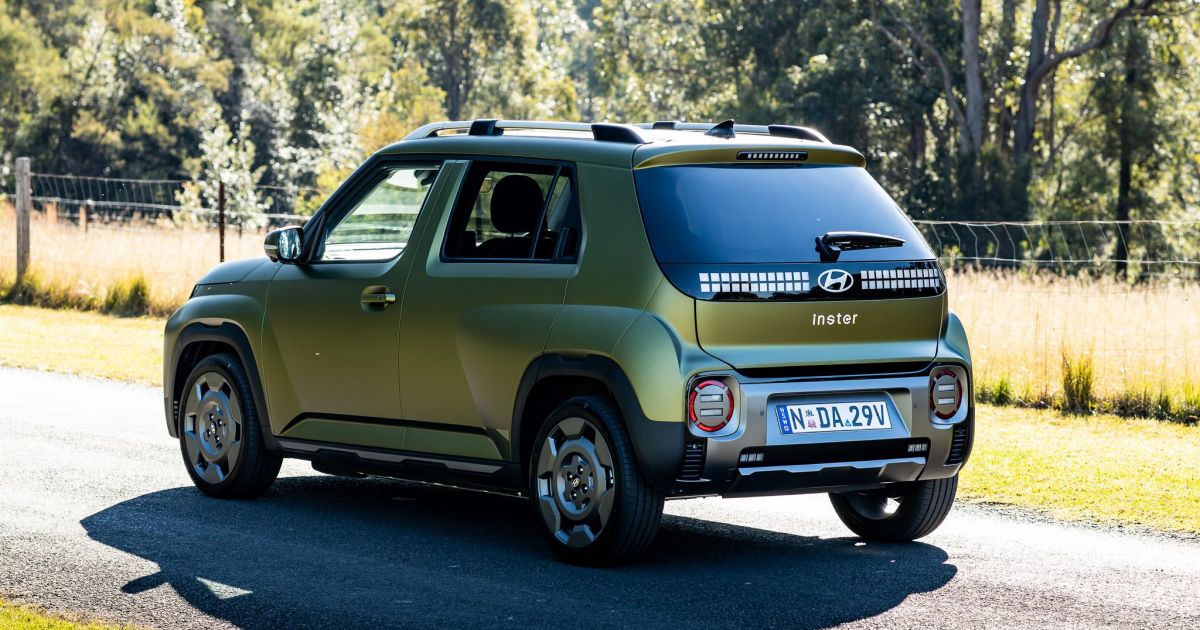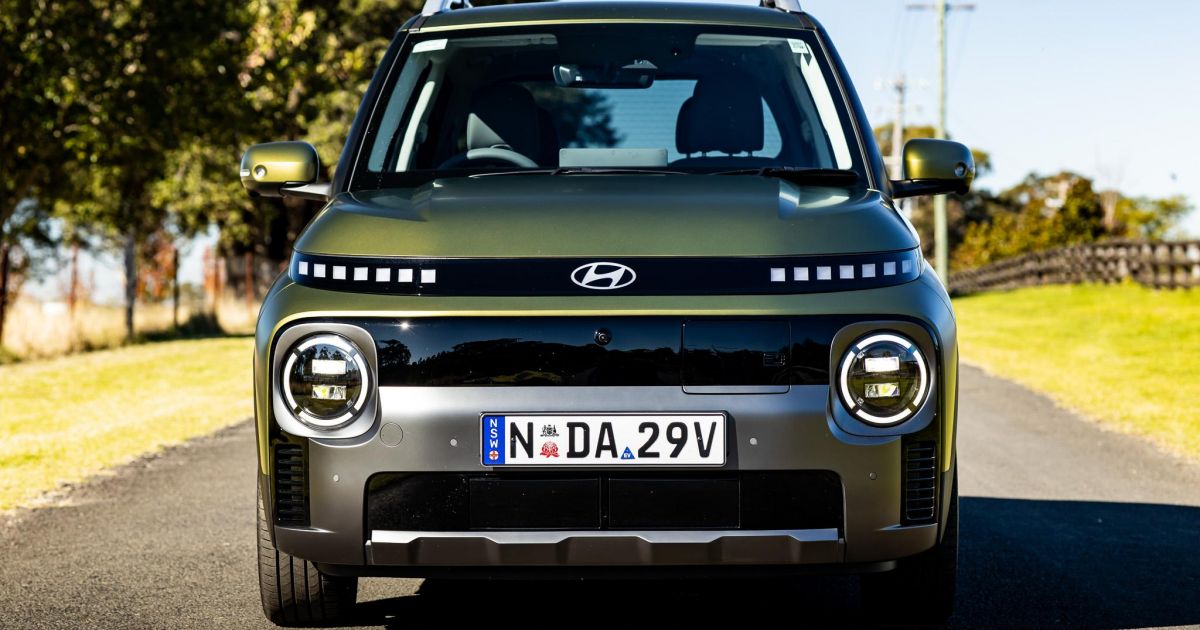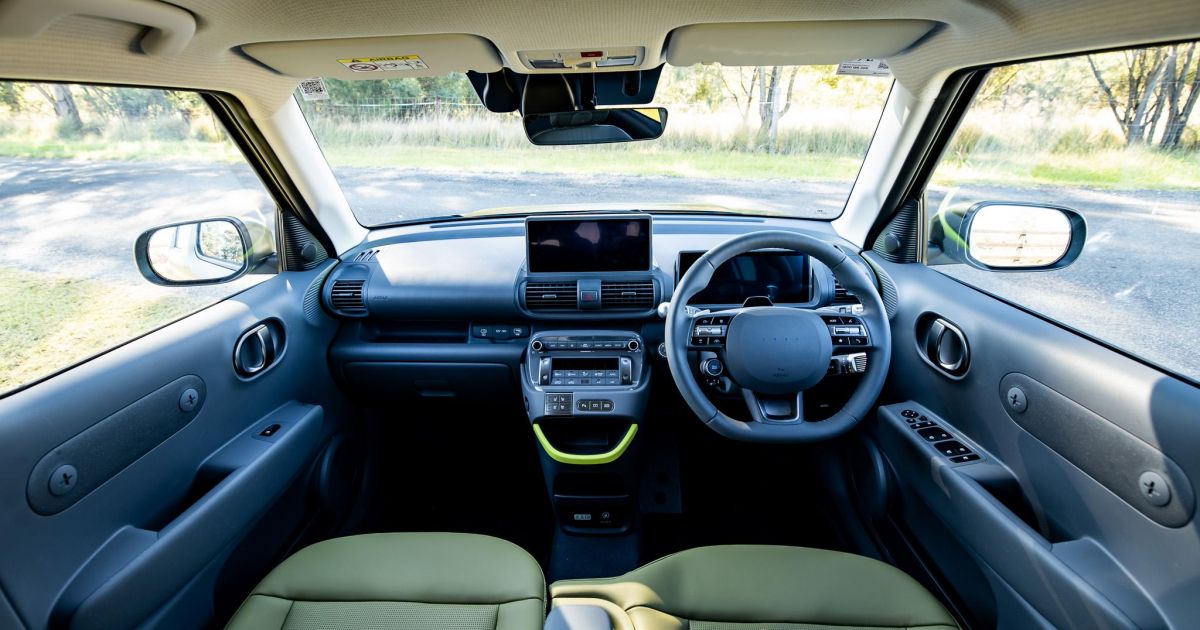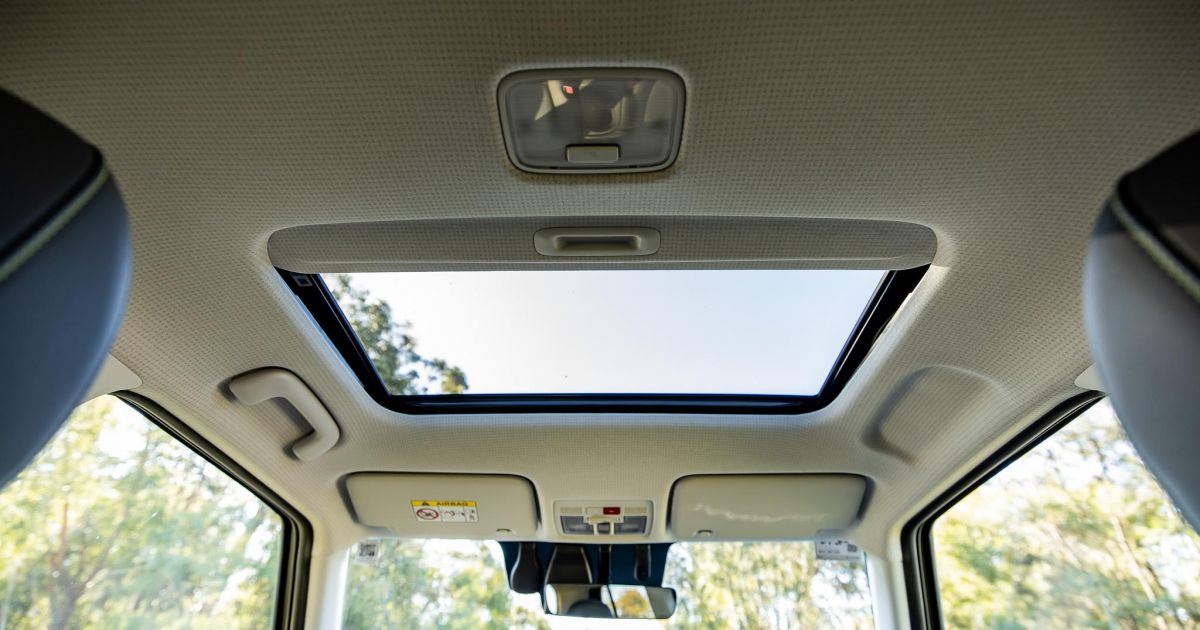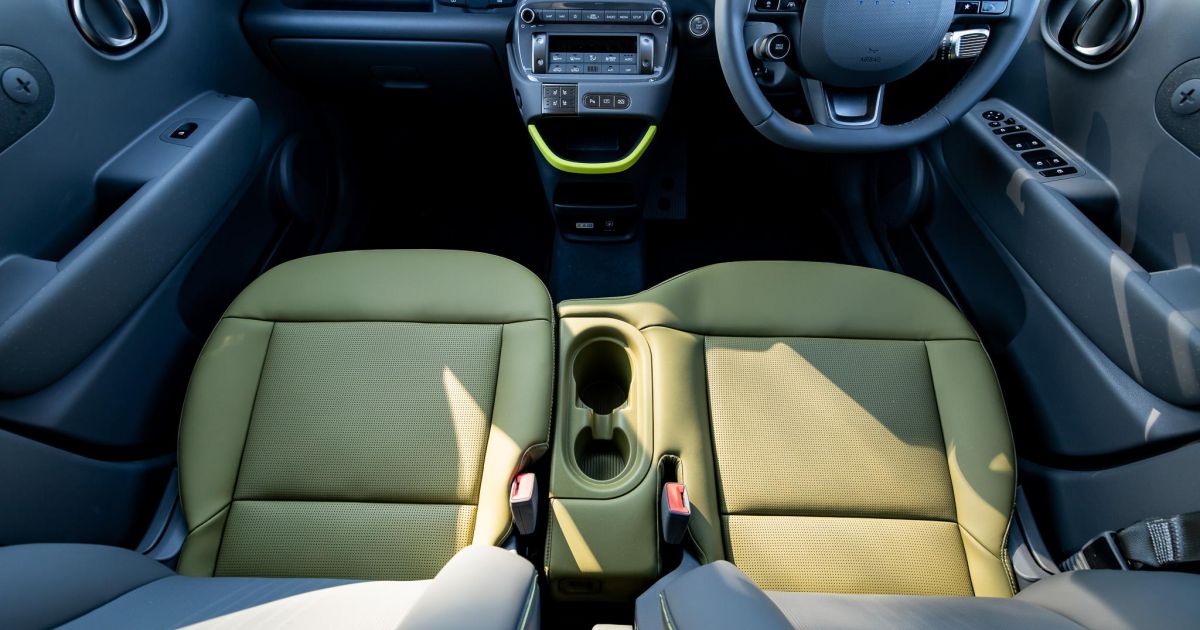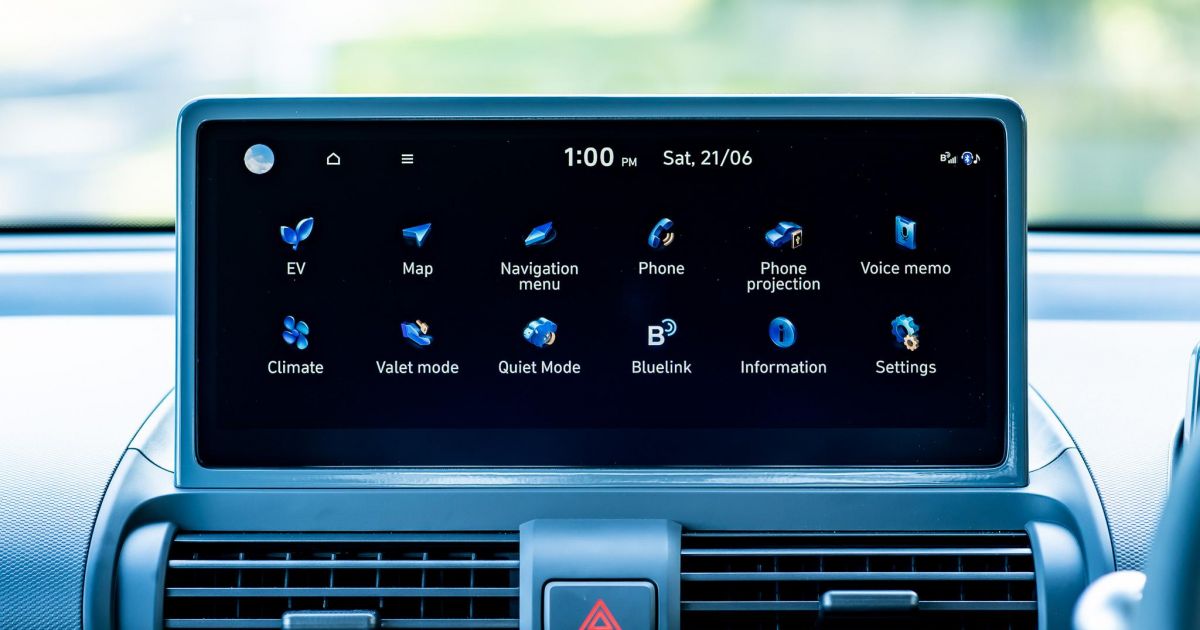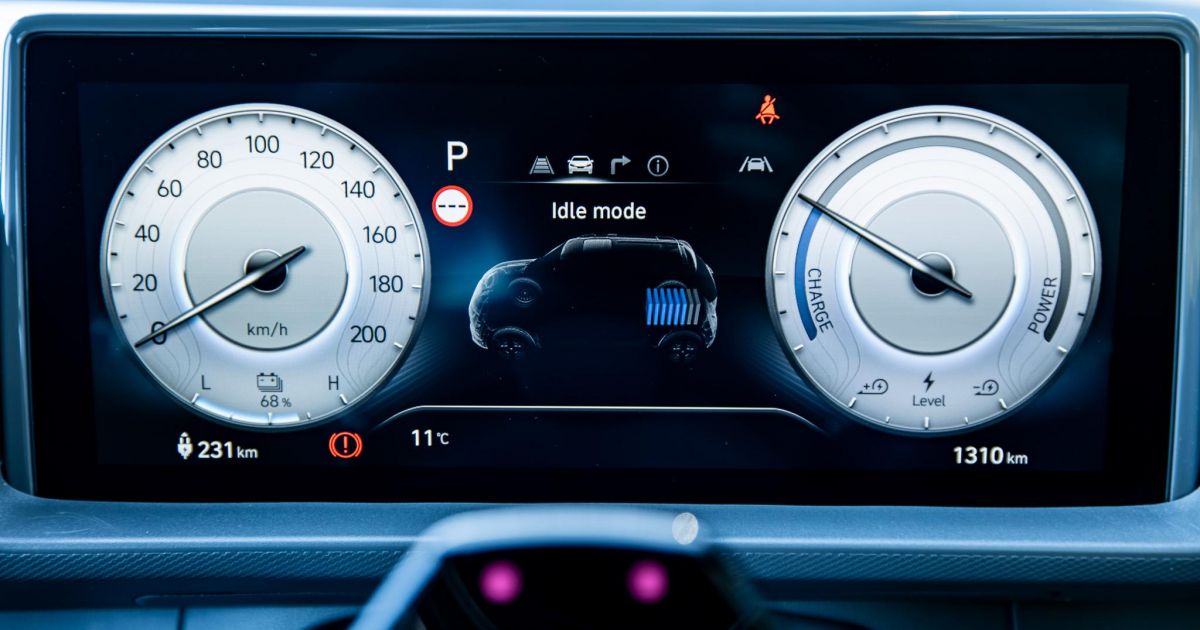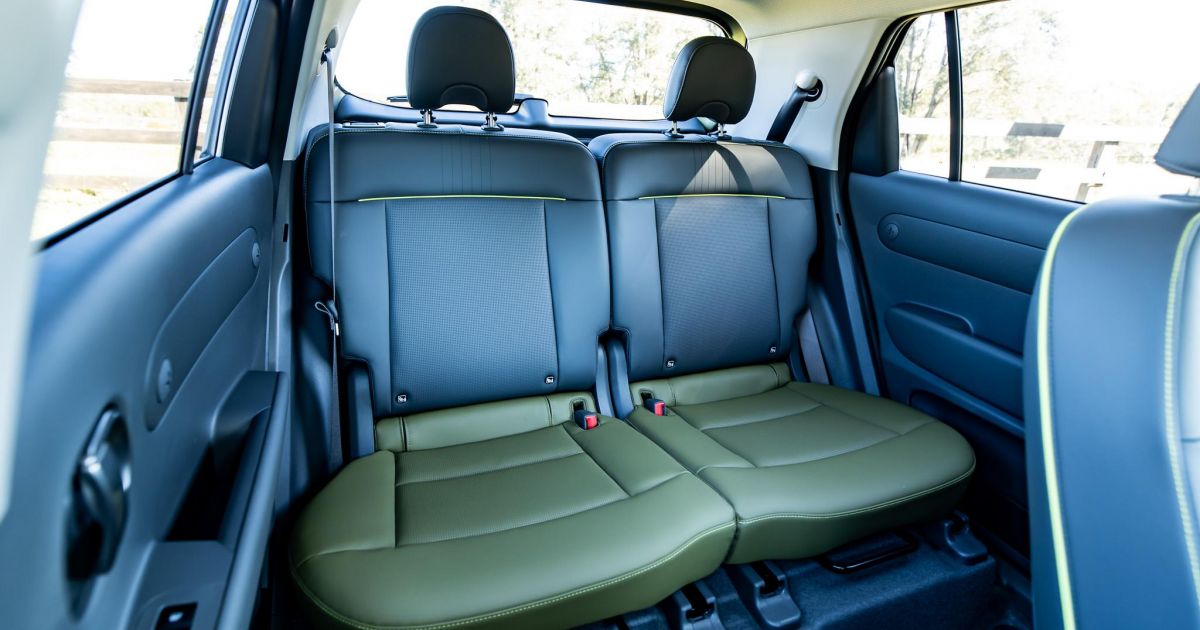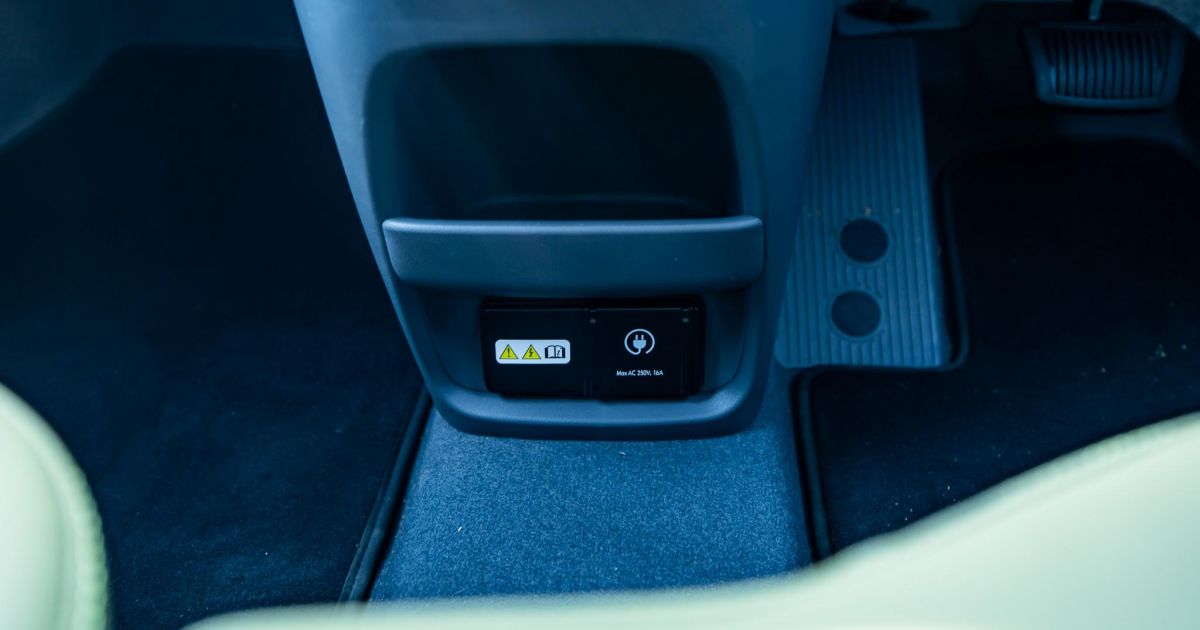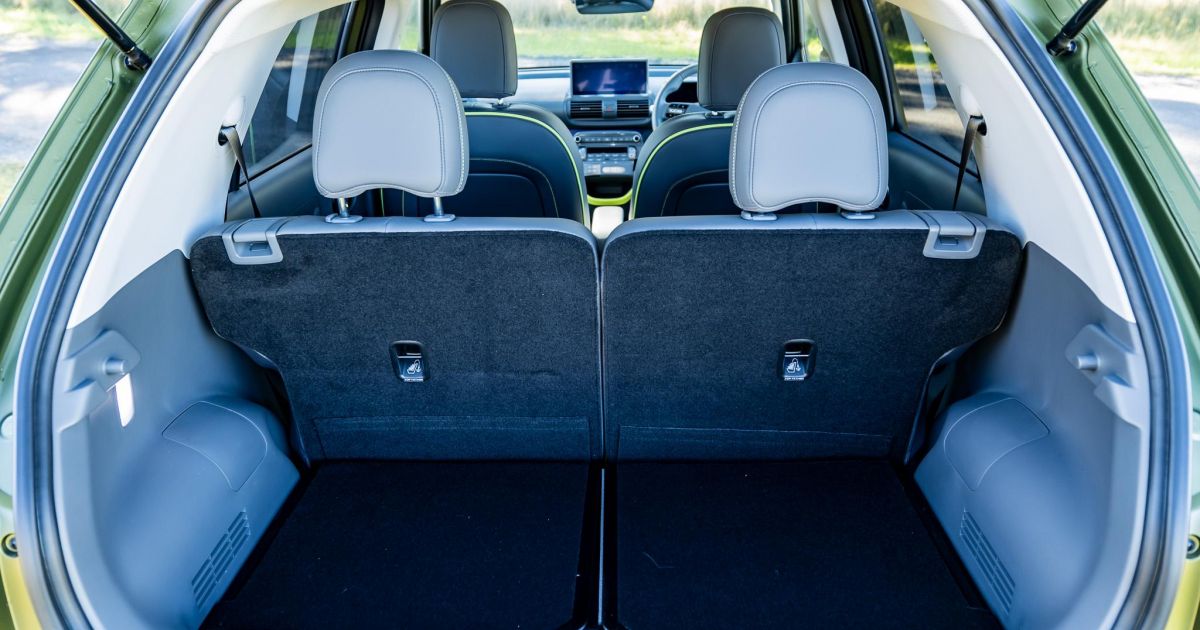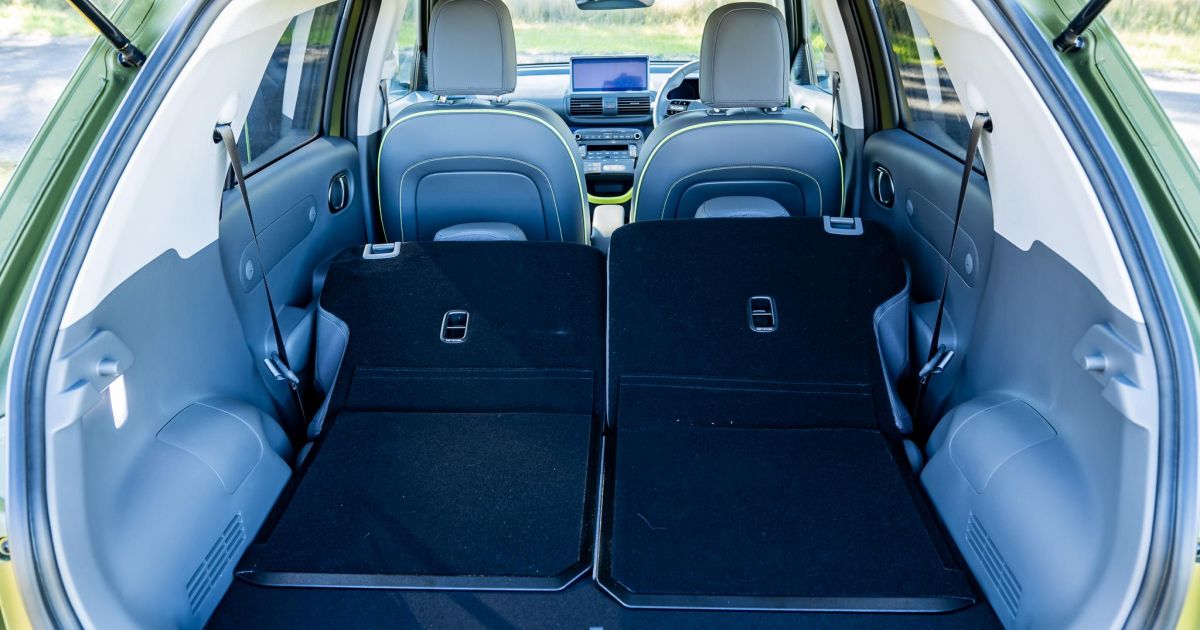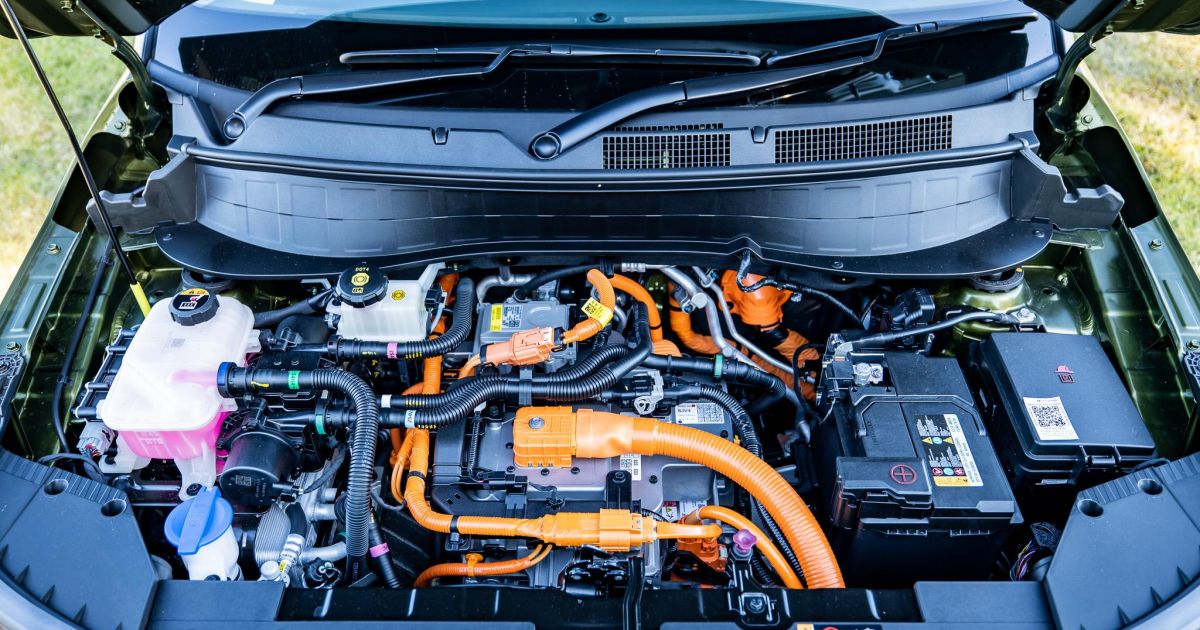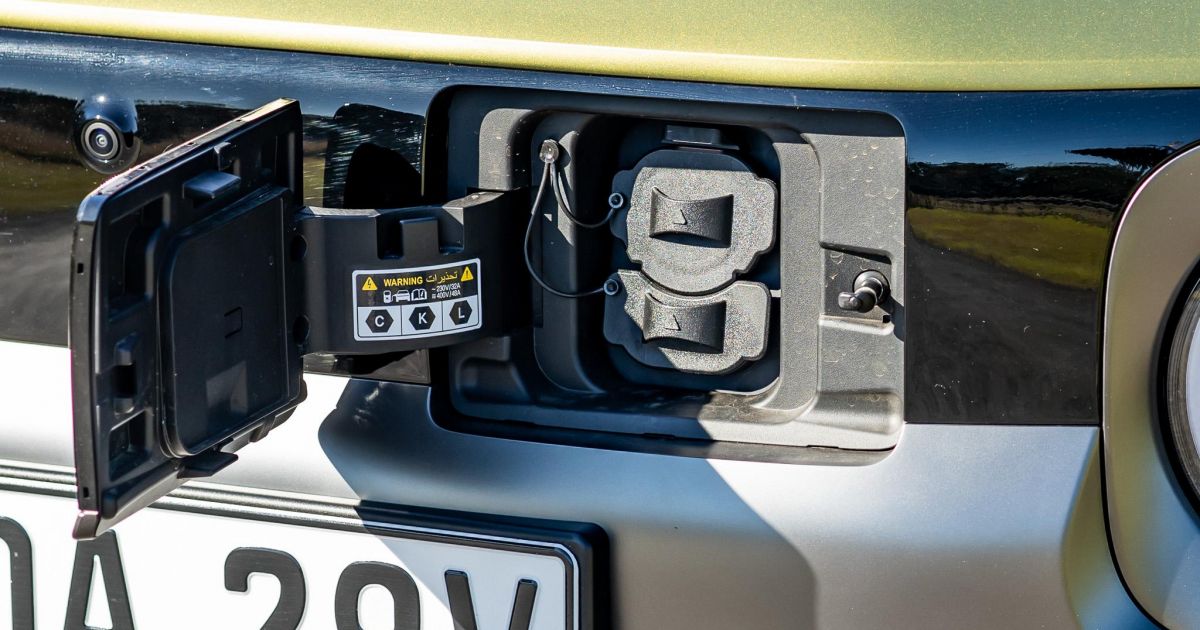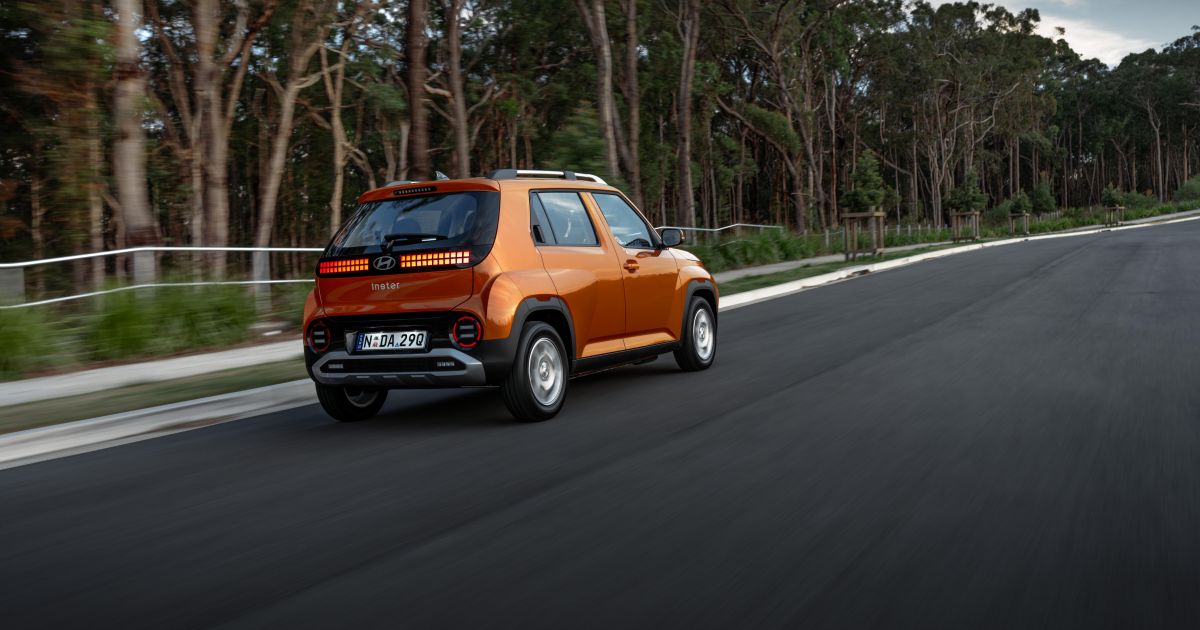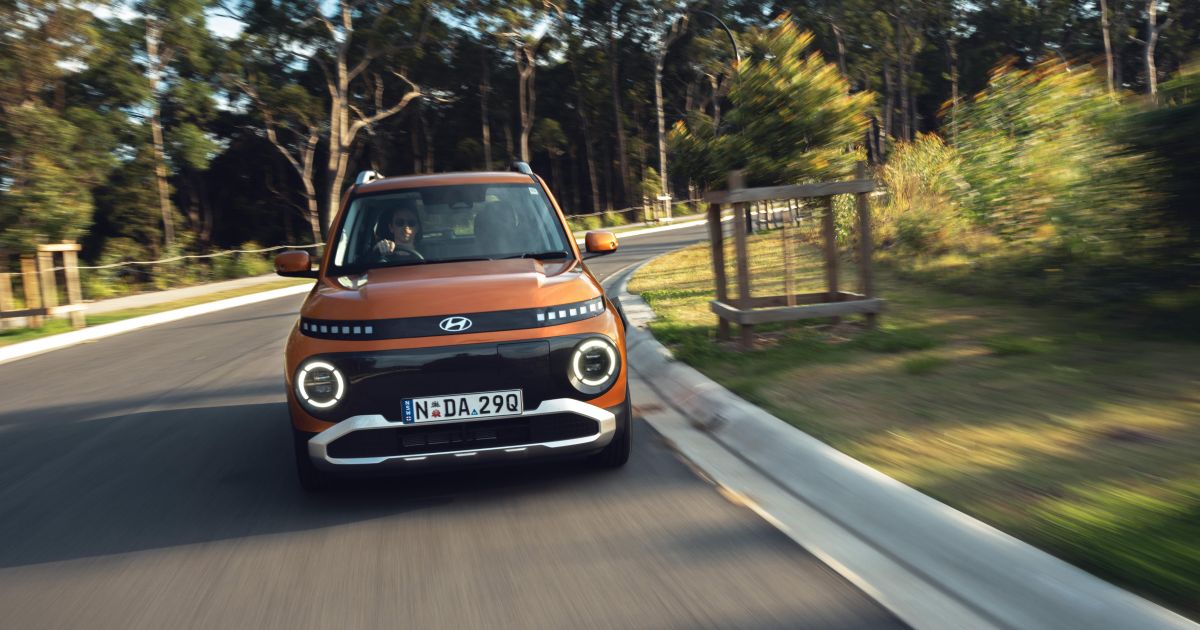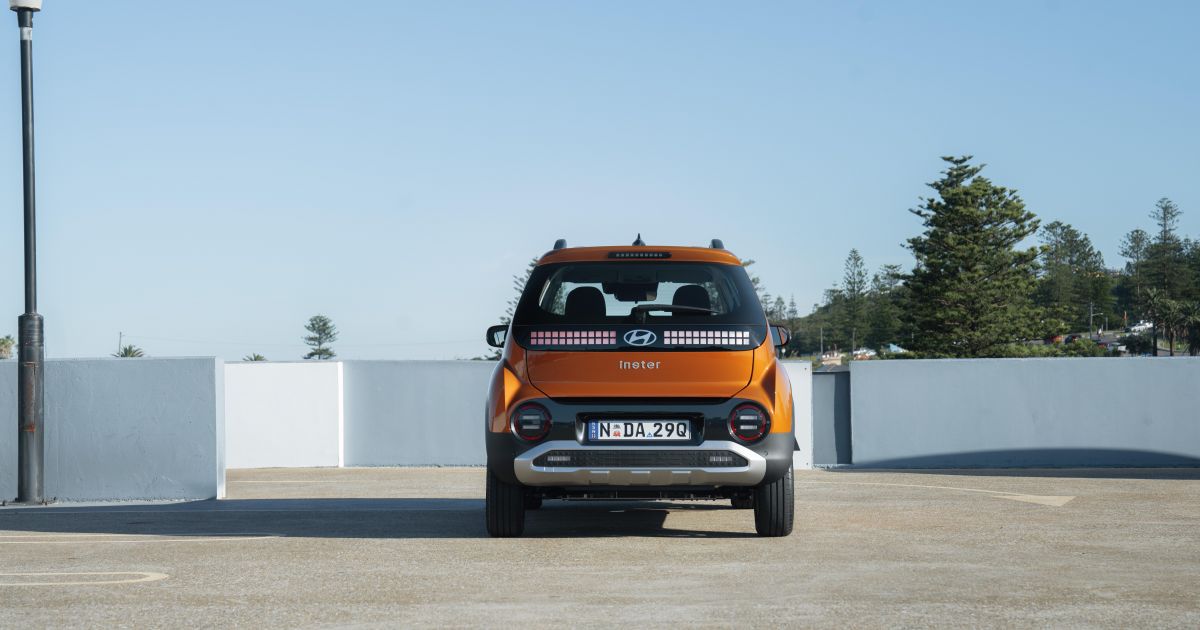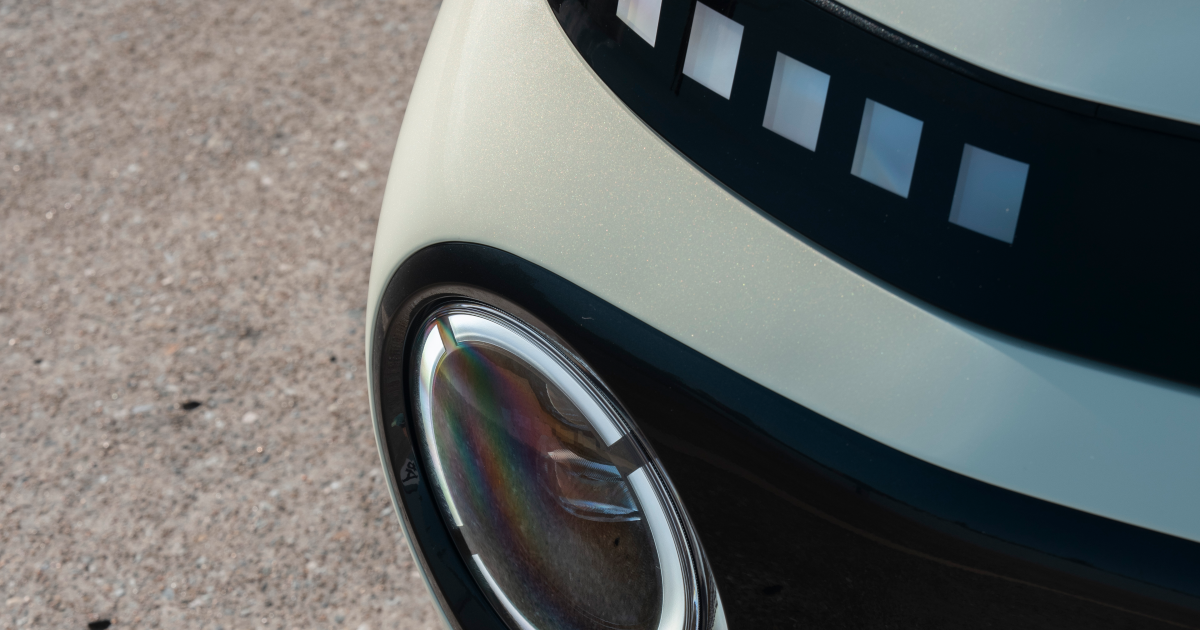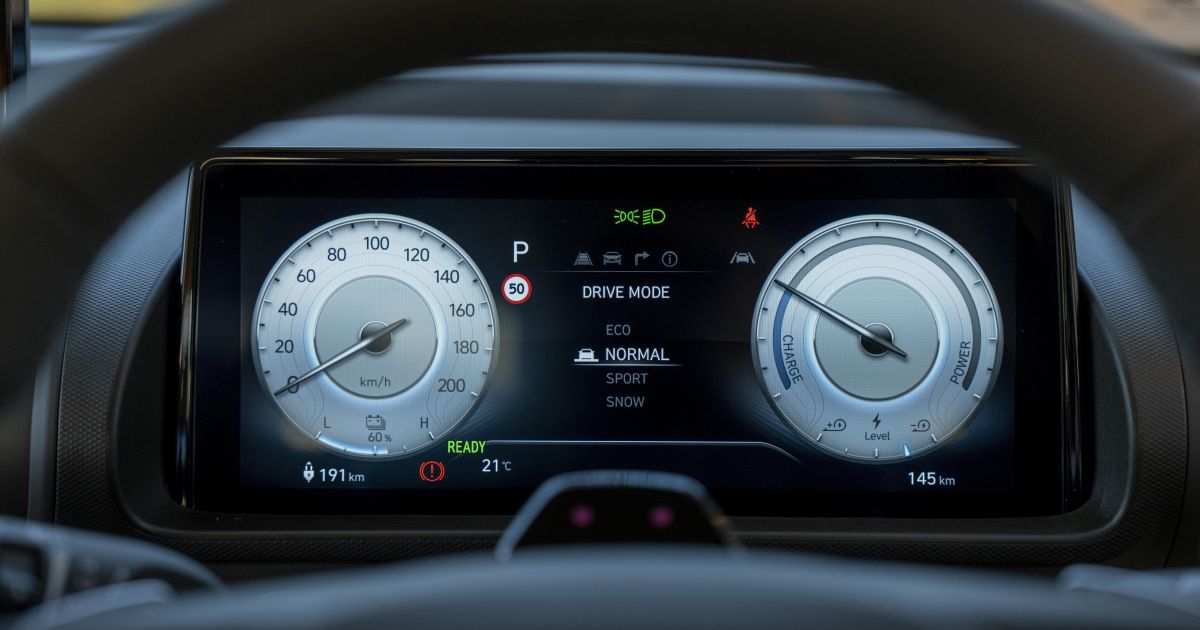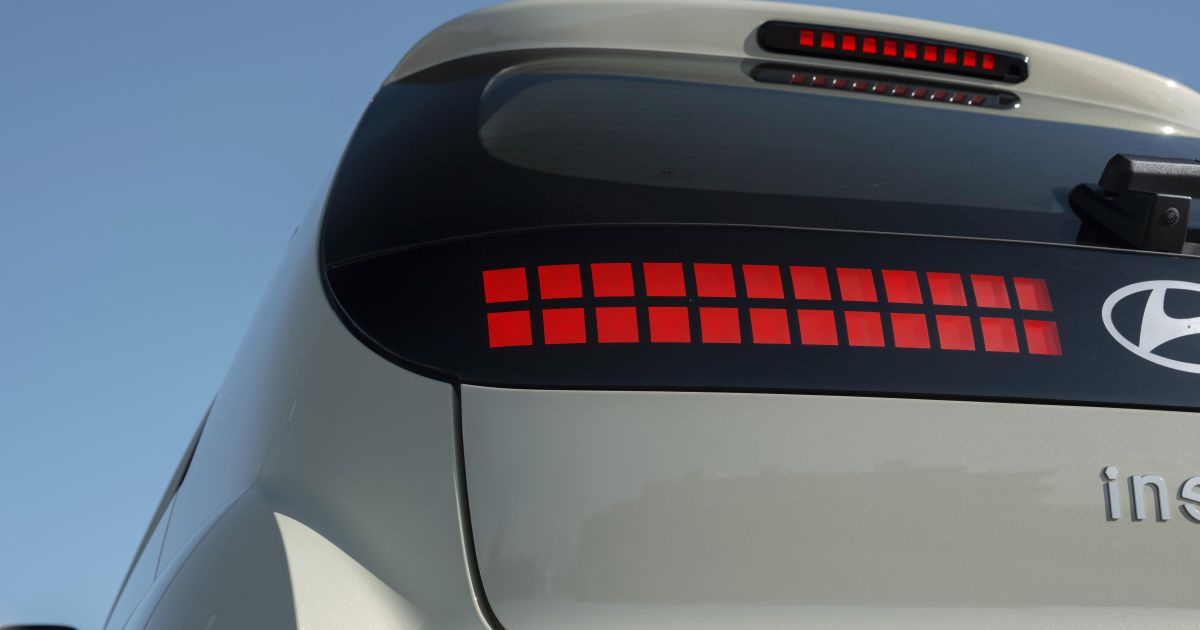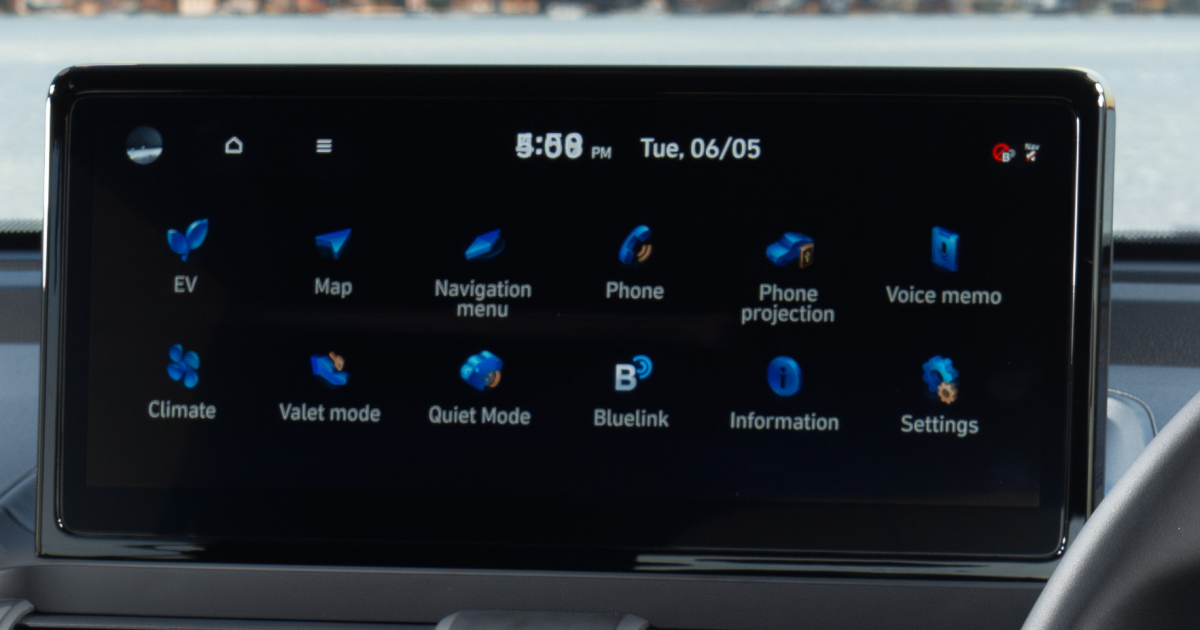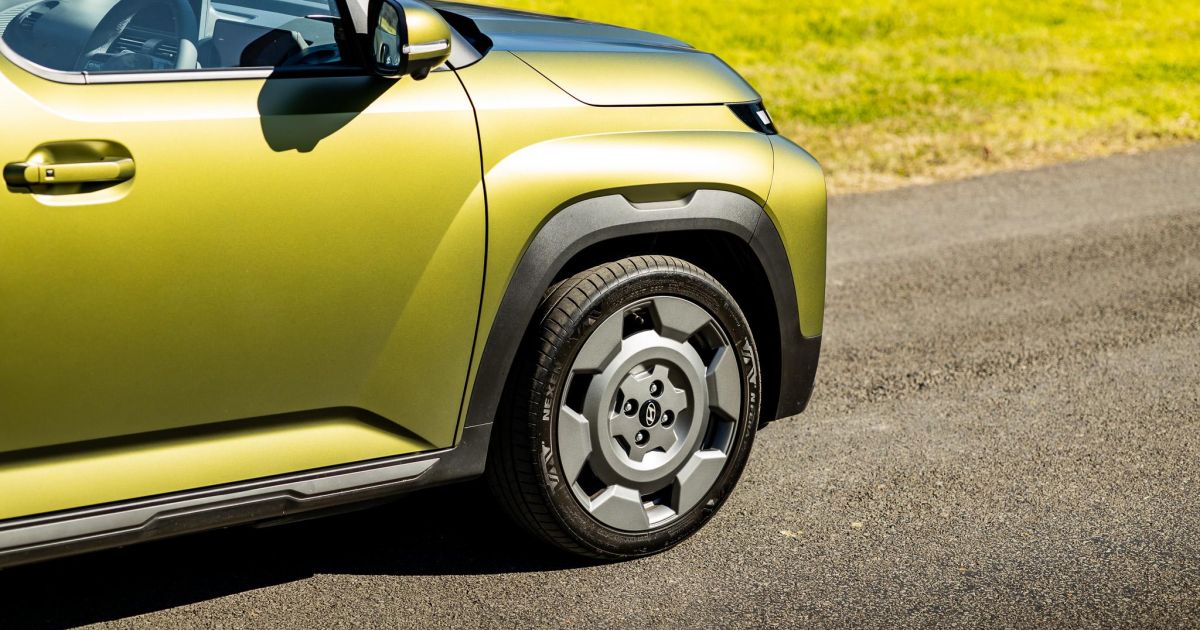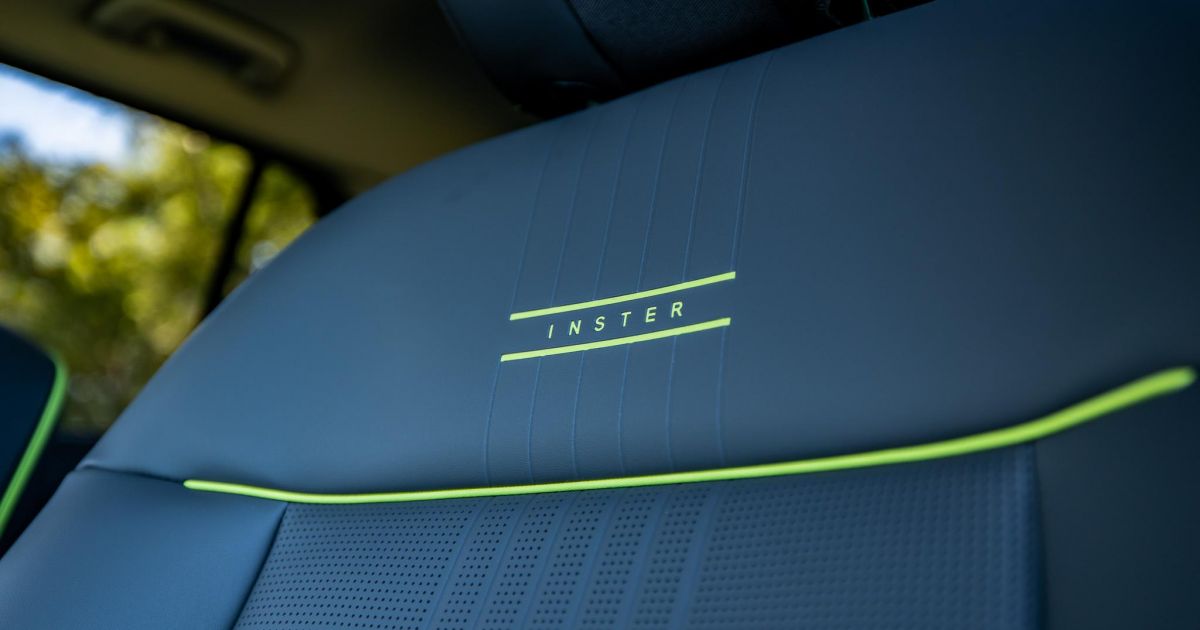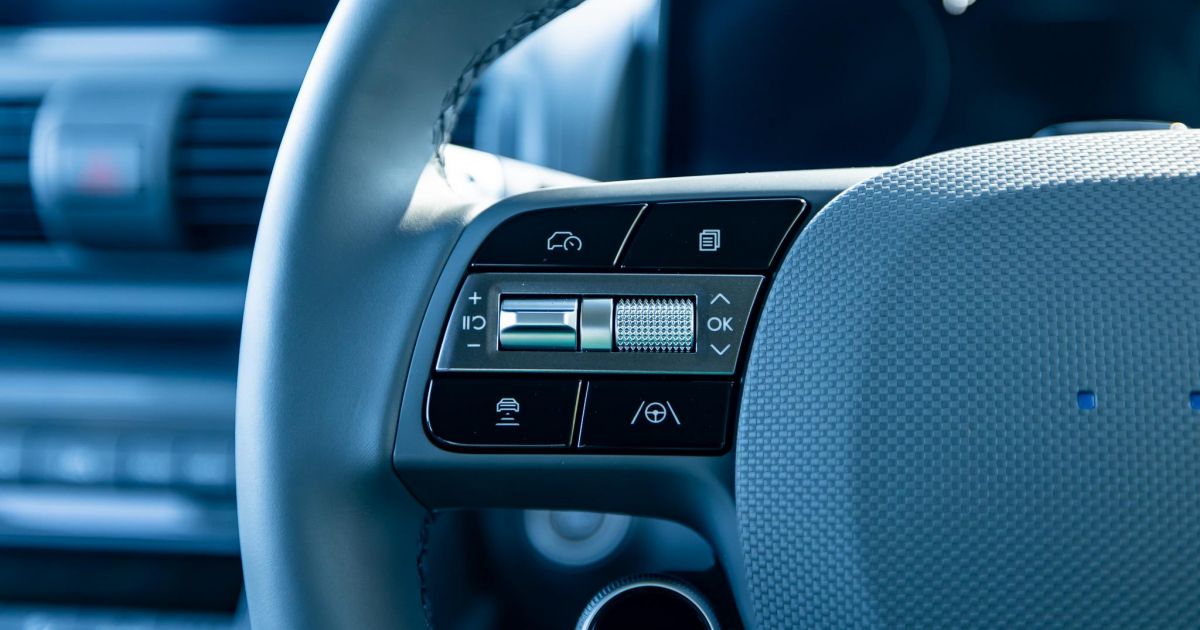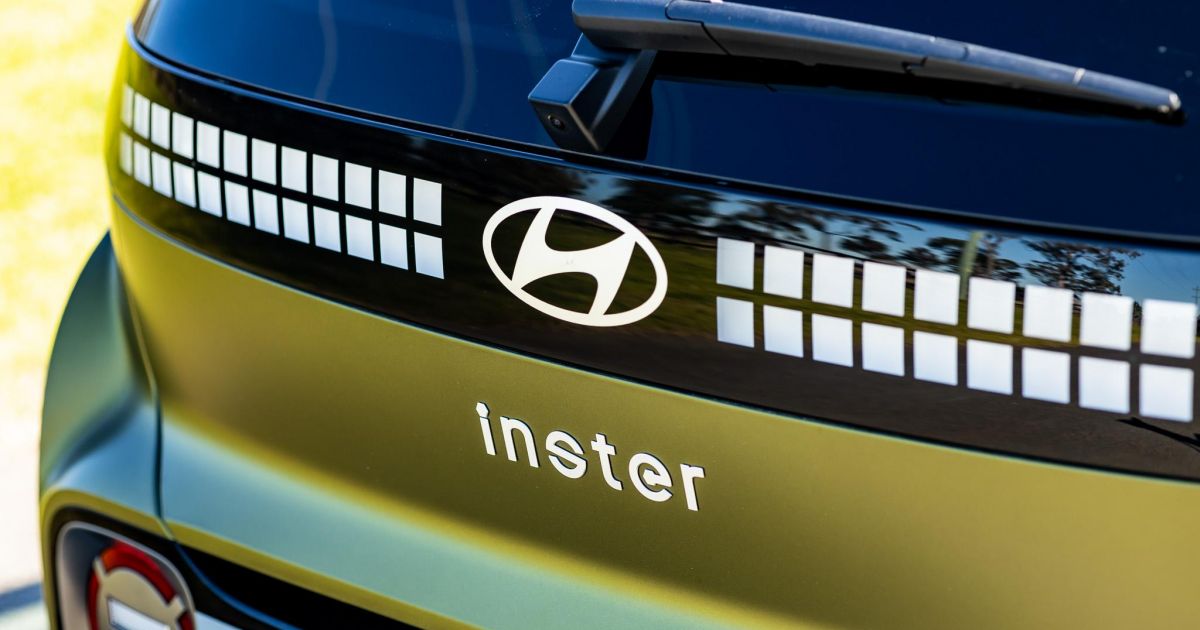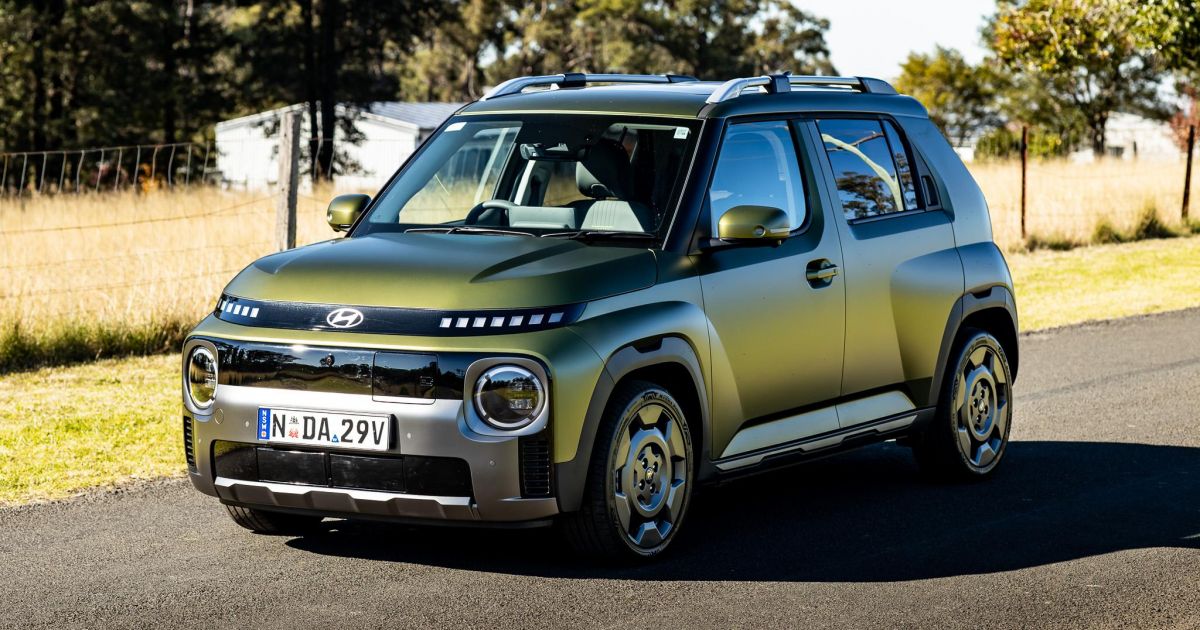The Hyundai Inster Cross is a more rugged take on the cutesy compact electric vehicle (EV), and we reckon it’s one of the coolest new cars on the market.
Just take a look at those lines, those lights, those rims!
It’s a cracking looking thing and, if you want to, you can get it with a roof basket instead of a sunroof, which adds practicality – theoretically, at least, because while it might make this a more cargo-capable option, it cuts the driving range significantly.
Although the Inster is officially classed as a light SUV, it’s still very much a city car with no off-road chops, but this Cross version of the Inster is the best-equipped, and – though it’s the most expensive – arguably the best value, too.
How much does the Hyundai Inster cost?
The Hyundai Inster lineup starts at just under $40,000 – and while that might seem okay for an electric car, this is a teeny-weeny model that isn’t as practical as some other EVs you could choose for less money with more space inside.
| Model | Price before on-road costs |
|---|---|
| 2025 Hyundai Inster Standard Range | $39,000 |
| 2025 Hyundai Inster Extended Range | $42,500 |
| 2025 Hyundai Inster Cross | $45,000 |
But its size and design is clearly part of its appeal, and that’s particularly prevalent in the flagship Inster Cross variant tested here.
The ‘before on-roads’ factor is a consideration. Plenty of rivals at the affordable end of the spectrum include on-road costs, making it easier to see what the actual transaction price will be, whereas in this instance, your location and the dealership you shop with will determine the cost.
For example, the version you see here with the optional Amazonas Green matte paint ($1000) racks up at more than $50,500 drive-away in NSW. Yeesh.
There are plenty of more affordable and more practical options for those in the market for a budget EV (such as the MG 4, MG S5, BYD Dolphin and Jeep Avenger), and there are some compelling choices from European makers that offer quirky options like the Fiat 500e, Abarth 500e and Mini Cooper Electric.
To see how the Hyundai Inster stacks up against its rivals, check out our comparison tool
What is the Hyundai Inster like on the inside?
The Inster Cross can be had with a boring interior, or the interior you see in these images. And wow, this one isn’t going to be for everyone!
The ‘Dark Grey + Amazonas Khaki – Bio Artificial Leather Appointed’ finish is a no-cost option available with six of the seven exterior paint options for the Inster Cross (you cannot have it with the Dusk Blue matte paint – because blue and green should never be seen without a colour in between, darlings…!).
The roof lining is also finished with a pretty interesting design, as is the sunroof shade. But really, that sunroof is so small compared to many others out there, it’s almost not worth having.
And while it is, er, interesting, it does exaggerate the ‘not-real-leather’ part of the trim. I think it’s fun and funky, but I also think one with a black interior will be easier to sell when the time comes…
The fact there’s a section between the seats that houses cupholders and an armrest, which moves when the driver moves their seat, is a funky idea. Having cups of hot coffee near your leg in a bump-able position? Not so funky.
But it frees up a flat space in front of the seat to allow lots of storage, and there’s even a couple of bag hooks on the dash and door to ensure you’ll fit everything in. Plus at the bottom of the dash area there’s a 230V plug for your hairdryer, laptop or whatever else.
The main dashboard has a 10.25-inch touchscreen media system with plenty of good usability and tech to it, but for a new car aimed at tech-savvy customers, the lack of wireless Apple CarPlay and Android Auto is a big miss. It’s to do with this generation of screens being unavailable with sat nav and wireless connectivity.
The fact there are proper buttons and dials for the controls is a nice inclusion though – many other EVs have touchscreen controls for things like seat heating and cooling, and climate management. There’s single-zone climate control with buttons for all the major controls.
There is a driver information screen that matches the main display, and the display illustration changes depending on the drive mode you’re in. The screen also has a heap of info available including a trip computer, drivetrain info and some of the safety tech info too.
The steering wheel has a heap of controls on deck too, and there’s steering wheel heating for this spec too (via a button down near the driver’s right knee).
The most intriguing part is the gear selector, which is a stalk off the steering column that requires you to twist it forwards for D and backwards for R, with a park button on the end. Long-legged people, watch your knees getting in!
There are pockets in the doors, overhead visors with mirrors (but they don’t have lights that come on automatically; you have to hit the switch each time), and an auto-dimming rear-view mirror.
The rear seat is a sizeable space for the size of the car. With the driver’s seat set to my driving position, at 182cm/6’0” I could just squeeze in behind.
But with the seat slid all the way back – which you can do in all Insters – you will find there’s a heap more legroom. Headroom is generous no matter what, and the view out is good, too.
Be mindful, though, that like all Insters it’s strictly a four-seater. There is no middle rear seat, which could limit its appeal.
There are ISOFIX child seat anchors and top-tethers for those seats, but there’s not much else in terms of amenities except for a single USB-C port. No vents. No cupholders.
And also, no rear airbags.
That’s right – there is no airbag coverage for second-row occupants. Hmmm, that was an issue back in the early 20-teens for the Renault Captur and Clio, and the Volkswagen Up and Amarok, but in 2025 it really is a very notable omission.
As for the boot? Well as you’d expect, it is configurable due to those sliding rear seats, but in my opinion the way it’s all pieced together is a bit silly.
There are flaps on the rear seatbacks that are adjustable because of the seats, but they get in the way of making the most of the space in the boot. The cargo cover is a pain, too – it gets in the way. Hyundai could have just done without it, and made the car a smidge cheaper!
There is a reasonable cargo capacity – a minimum of 280 litres with the rear seats in their rearmost position, increasing to 1059L with the rear seats folded flat. There’s no spare wheel, though. Just a tyre repair kit.
| Dimensions | Hyundai Inster |
|---|---|
| Length | 3825mm |
| Width | 1610mm |
| Height | 1575mm |
| Wheelbase | 2580mm |
| Cargo capacity | 280-1059L |
To see how the Hyundai Inster stacks up against its rivals, check out our comparison tool
What’s under the bonnet?
The Inster Cross gets the bigger battery and more power than the base model.
| Specifications | Hyundai Inster Cross |
|---|---|
| Drivetrain | Single motor electric |
| Battery | 49kWh Nickel manganese cobalt (NMC) |
| Power | 85kW |
| Torque | 147Nm |
| Drive type | Front-wheel drive |
| Weight | 1423kg |
| 0-100km/h (claimed) | 10.6 seconds |
| Energy consumption (claimed) | 15.1kWh/100km |
| Energy consumption (as tested) | 15.5kWh/100km |
| Claimed range | 360km (293km with roof basket) |
| Max AC charge rate | 10.5kW |
| Max DC charge rate | 120kW |
The Inster’s battery can also be used to power electrical appliances because it has vehicle-to-load (V2L) capability.
Now, the efficiency of the Inster is impressive. On paper, the Inster Cross is claimed to use 15.1kWh per 100km, which is good for a front-wheel drive EV on 17-inch wheels with low-profile tyres.
On my test, I saw a real-world return of 15.5kWh/100km, including a mix of urban, stop-start, highway and freeway driving.
But if you choose the Inster Cross with the roof basket, that increases the consumption to 18.8kWh/100km.
What sets the Inster apart from other ‘cheap’ EVs is that it has a relatively small NMC battery, but it is faster-charging than many of the budget-focused options.
Many rivals in the $40-$50k range are limited by 6.6kW to 7kW AC charging, and DC charging from 60kW-80kW.
That goes some of the way to explaining why the Inster mightn’t seem like the budget-friendly option it could be, but if you start to think of time as money, maybe it is a better choice on balance…!
To see how the Hyundai Inster stacks up against its rivals, check out our comparison tool
How does the Hyundai Inster drive?
The Inster is a fun little jigger.
-
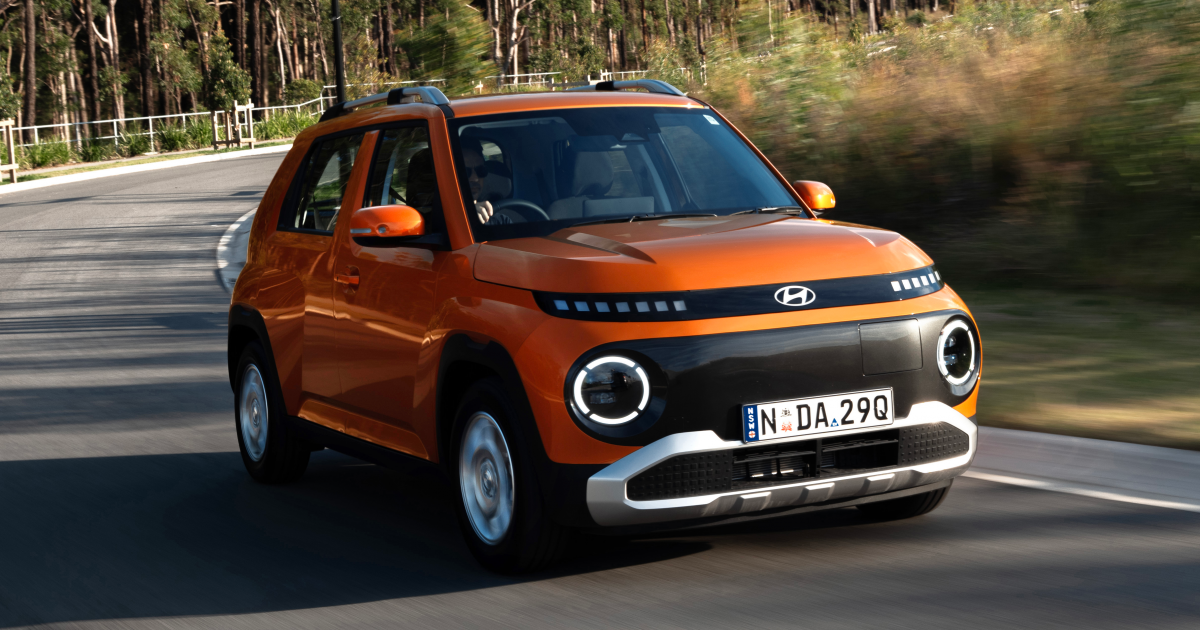
Standard Range
It has a settled and comfortable ride, even on the bigger wheels with low-profile tyres, and it steers at speed with a fun factor that many others in this class can’t match.
It’s not the most thrilling machine in terms of acceleration at high speeds, but the urgency on offer from 0-60km/h or so is addictive. Being electric, there’s a surge of torque from zero revs, and it’s a relatively quiet experience in urban driving.
But it can be loud on the highway, with a lot of road noise and wind noise evident, especially at 110km/h on highways with coarse-chip surfacing.
And while it is a joy to go for a jaunt in the Inster, one thing that is surprising is the turning circle and the steering action at parking pace. When you suddenly apply a lot of steering lock it can weight up unnecessarily, making U-turns more difficult than they ought to be – especially if you’re not ripped and buff like yours truly… ahem.
The surround-view camera and blind-spot monitoring systems do make it a mostly excellent urban driver, though. And it even has a neat little pedestrian warning sound to alert people outside the car of your presence, because otherwise you could creep up unnoticed.
I like the fact you have four levels of regenerative braking on offer, including an assertive i-Pedal mode that will allow you to pilot it just using the accelerator pedal. The other levels are pleasantly balanced, too. And if you prefer to just apply the brakes yourself, it is a nicely reactive pedal and not too squashy feeling, as some can be.
So, it can be a hoot to drive. But also, a massive pain in the backside.
That’s because – like almost all other Hyundais on sale today – it has some of the most annoying audible chimes for its safety systems, including an incessant driver monitoring system and an overbearing and often dimwitted speed sign recognition system.
You can turn them off, and you’ll have to each time you drive the car if you want a peaceful and enjoyable ride. The remedy for those is to either set up a favourite (the star button on the steering wheel) that you can shortcut to each time you restart the car, or you can jump into the menus and muck around with the screen. Either way, it’s a heap of screen presses before you can get on with it.
Look, it’s not going to be a dealbreaker for some – in fact, there are people that will appreciate the systems warning them of the speed signs. But I for one know all the speed zones where I live, and don’t need the car to ‘bing’ at me each time it thinks the speed limit has changed (and I say ‘it thinks’ because it can get it wrong, regularly!).
And while there is a ‘mute’ button function to turn off the ‘overspeed’ alert (where it will ‘bing-bing-bing’ at you if you’re going over the speed limit it thinks you’re driving in), it won’t mute all the safety sign chimes (as it does in the Tucson).
There’s a lane-keep system that auto-activates above about 60km/h, which you can switch off easily using the button on the steering wheel. However, when you turn it off, it will still reactivate active lane-keep assistance when you engage cruise control.
All told, the tech is all there, but it doesn’t have the most user-friendly operation. And the fact you have to make those multiple adjustments each time you get back into the car (rather than being able to set up a profile and disable multiple things in one press, a la the MG S5), makes it more tedious than likeable, which this car should be.
Another peculiarity (but completely understandable) is that the Cross doesn’t have any extra ride height – all Inster variants have 144mm of ground clearance.
For a ‘rough and tumble’ version of the Inster, it could have sat a bit higher to offer a touch more kerb jumping appeal… I mean, Kia increased the Picanto’s ride height by 15mm for the AO ‘SUV’ model! However, it could count against the aero efficiency and therefore reduce the EV range… tell me what you think in the comments.
To see how the Hyundai Inster stacks up against its rivals, check out our comparison tool
What do you get?
There are three variants in the Inster lineup.
2025 Hyundai Inster Standard Range equipment highlights:
- 15-inch alloy wheels
- Tyre repair kit
- LED headlights
- Automatic high-beam
- Rain-sensing wipers
- Proximity entry with push-button start
- 10.25-inch digital instrument cluster
- 10.25-inch touchscreen infotainment system
- Satellite navigation with over-the-air updates
- Apple CarPlay and Android Auto
- Wireless phone charger
- 2 x USB-C outlets
- 1 x USB-A outlet
- Cloth upholstery (made with recycled PET)
- Sliding and reclining rear seats
- 50:50 split/fold rear seats
- Tilt and telescopic steering wheel adjustment
- Leather-wrapped steering wheel
- Steering wheel lights that display charging status, drive mode
- LED interior lighting
- Single-zone climate control
- Heat pump
The Extended Range adds:
- Larger capacity battery (49kWh)
- More power
- 17-inch alloy wheels
The Inster Cross adds:
- Exterior cladding
- Roof rails
- Choice of sunroof or roof basket
- Rear privacy glass
- Leatherette upholstery
- Heated and ventilated front seats
- Heated steering wheel
- Electrochromatic rear-view mirror
- 64-colour ambient lighting
- ‘Smart temperature comfort control system’
The Cross also has the ability for all four seats to be folded flat.
All Inster variants come with a complimentary five-year Bluelink subscription, which includes:
- Automatic collision notification
- Emergency call (SOS) function
- Live traffic and weather information
- Voice assistant
- Remote control of climate and vehicle functions
- Remote vehicle tracking
To see how the Hyundai Inster stacks up against its rivals, check out our comparison tool
Is the Hyundai Inster safe?
The regular Hyundai Inster was recently awarded a four-star ANCAP safety rating, although the Inster Cross remains unrated.
As mentioned above, it doesn’t have any airbag coverage for the second-row occupants, which could be a deal-breaker for some. It has dual front, front side, front curtain and a front centre airbag to prevent head clashes in a side impact.
Then there are the safety tech frustrations… I mean, all the advanced safety technology on offer…
Standard safety equipment includes:
- Autonomous emergency braking
- Pedestrian detection
- Cyclist detection
- Motorcycle detection
- Junction assist
- Navigation-based adaptive cruise control
- Blind-spot assist
- Driver attention monitoring
- Highway Driving Assist (adaptive cruise + lane centring)
- Lane Following Assist (lane centring)
- Lane-keep assist
- Intelligent Speed Limit Assist
- Rear occupant alert
- Rear cross-traffic assist
- Safe exit warning
- Traffic sign recognition
- Reversing camera
- Rear parking sensors
The Inster Cross also receives:
- Blind-Spot View Monitor (camera view of blind spots)
- Front parking sensors
- Parking Collision-Avoidance Assist – Reverse
- Surround-view camera with 3D view
So the Inster Cross certainly gets the best safety stuff.
To see how the Hyundai Inster stacks up against its rivals, check out our comparison tool
How much does the Hyundai Inster cost to run?
Hyundai offers a five-year, unlimited-kilometre warranty for all of its models including the Inster, which also comes with an eight-year, 160,000km warranty for the battery pack.
| Servicing and Warranty | Hyundai Inster |
|---|---|
| Warranty | 5 years, unlimited kilometres |
| Roadside assistance | Lifetime (service activated) |
| Service intervals | 24 months or 30,000km |
| Capped-price servicing | 4 years |
| Total capped-price service cost | $1310 |
The service intervals for this mini-EV are lengthy, at 24 months or 30,000km. You can pay as you go, with capped price servicing available.
Or you can prepay your maintenance at $655 for the first service, or $1310 for four years/60,000km of cover. That still works out to $327.50 per year for servicing, which isn’t the cheapest for a fully electric mini-car.
The brand will top up your roadside assistance each time you service with a Hyundai workshop, though. And it will do that for life, according to the brand’s ownership paperwork.
To see how the Hyundai Inster stacks up against its rivals, check out our comparison tool
CarExpert’s Take on the Hyundai Inster Cross
It’s a novel, interesting thing, and well worth considering if you can stomach the price for a tiny little EV. If you don’t need much rear-seat space or a big boot, then it might be perfectly fine.
Pragmatically, however, there are better options out there for similar money or less.
Quirky and cool? Yes.
But too much money? Yes to that too.
Interested in buying a Hyundai Inster? Let CarExpert find you the best deal here
Click the images for the full gallery

